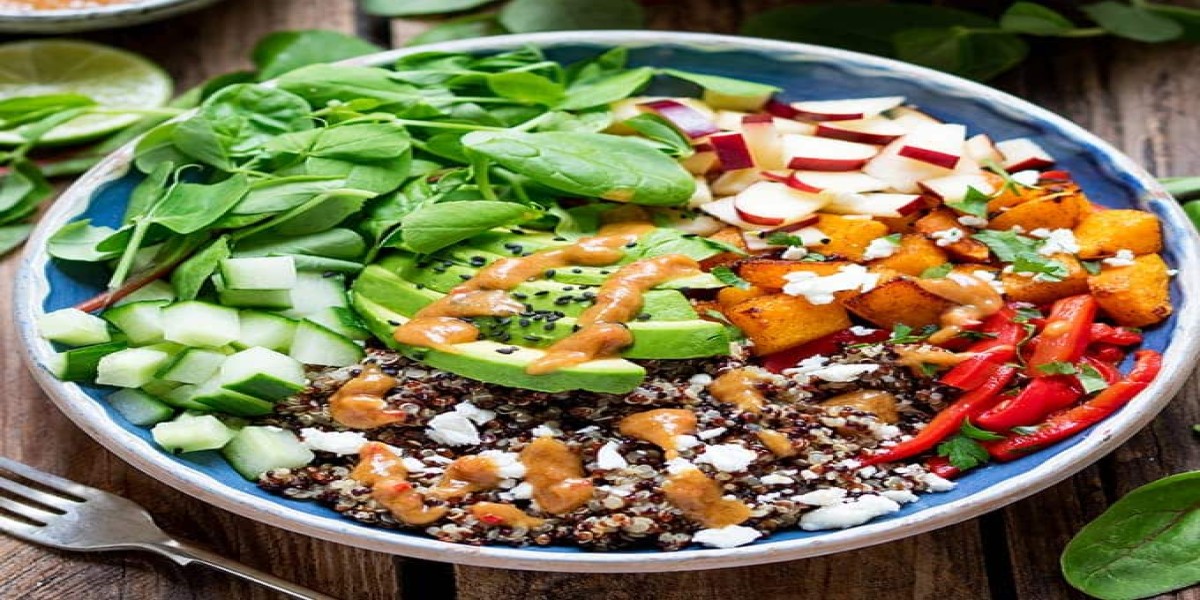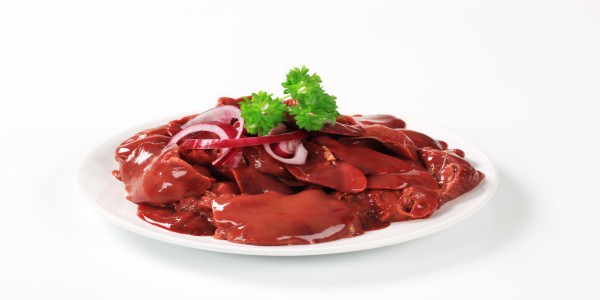Vegetarian Buddha Bowl: A Culinary Delight for Your Taste Buds
Embark on a culinary journey with the Vegetarian Buddha Bowl, a dish that transcends taste to embrace health. Dive into the intricacies of assembling this bowl of goodness, harmonizing various ingredients for a feast that delights both your palate and well-being.
The Art of Assembly: Crafting the Perfect Meal with Thoughtful Choices
In the culinary realm, the art of assembly plays a pivotal role in creating a memorable dining experience. One of the key decisions that shape the foundation of any dish is choosing the right base. Whether you opt for the wholesome goodness of grains or the vibrant freshness of greens, your selection can elevate your meal to new heights.
Grains: Quinoa, Rice, or Couscous
Grains serve as a versatile and nutritious canvas for countless culinary creations. Quinoa, with its nutty flavor and delicate texture, has surged in popularity due to its high protein content and abundance of essential amino acids. It not only adds a satisfying crunch to your dish but also brings a nutritional punch.
Rice, a dietary staple for many cultures, offers a plethora of varieties, each contributing a distinct taste and texture. Brown rice, known for its robust flavor and higher fiber content, provides a heartier base compared to the more refined white rice. Meanwhile, wild rice introduces an earthy and chewy element, perfect for those seeking a unique twist.
Couscous, a staple in Mediterranean cuisine, boasts a light and fluffy consistency. Its quick preparation time makes it an excellent choice for those with a busy lifestyle. Additionally, couscous effortlessly absorbs the flavors of accompanying ingredients, making it an ideal partner for a wide array of dishes.
When incorporating grains into your meal, consider the flavor profile you desire, the nutritional benefits you seek, and the overall theme of your dish. Whether you're crafting a wholesome grain bowl or a delectable side, the right choice of grains can transform your creation into a culinary masterpiece.
Greens: Spinach, Kale, or Mixed Salad Greens
The second crucial element in the art of assembly is the inclusion of vibrant and nutrient-packed greens. Spinach, with its tender leaves and mild flavor, serves as a versatile option that blends seamlessly with a variety of ingredients. Packed with vitamins and minerals, spinach not only enhances the visual appeal of your dish but also contributes to its overall nutritional value.
Kale, a robust and hearty green, has gained acclaim for its exceptional health benefits. Rich in antioxidants and a great source of vitamins A, C, and K, kale adds a bold flavor and satisfying crunch to any dish. Whether used in salads, sautés, or as a flavorful bed for proteins, kale elevates the nutritional density of your meal.
For those who prefer a medley of flavors and textures, mixed salad greens provide an ideal solution. Comprising a variety of lettuces such as arugula, romaine, and butterhead, mixed greens deliver a delightful combination of crispiness and tenderness. Their diverse flavors add depth to your assembly, creating a harmonious blend that tantalizes the taste buds.
Plant-Based Proteins: Tofu, Tempeh, or Legumes
In the realm of protein-packed goodies, plant-based options take center stage, offering a wholesome alternative for those seeking a break from animal-derived proteins. Tofu and tempeh, both derived from soybeans, emerge as versatile and nutrient-rich choices. Let's delve into the protein prowess of these plant-based wonders.
Tofu, the Soy Marvel
Tofu, also known as bean curd, stands out as a culinary chameleon. Its neutral taste allows it to absorb the flavors of the dishes it graces, making it a staple in a myriad of cuisines. From silky smooth in soups to crispy and golden when pan-fried, tofu adapts effortlessly to diverse cooking techniques.
Beyond its adaptability, tofu boasts an impressive protein profile. A 100-gram serving of tofu typically provides around 8 grams of protein, making it a substantial source for plant-based enthusiasts. Additionally, tofu is rich in essential amino acids, iron, and calcium, contributing not only to muscle development but also to overall health.
Tempeh, the Fermented Powerhouse
Tempeh, a fermented soy product, takes the plant-based protein game to the next level. Its fermentation process not only enhances its nutritional content but also imparts a distinctive nutty flavor. With a firmer texture than tofu, tempeh lends itself well to grilling, baking, or sautéing.
In terms of protein content, tempeh shines with approximately 19 grams of protein per 100 grams. This places it on par with, or even surpassing, some meat-based proteins. Moreover, tempeh is a fantastic source of probiotics due to the fermentation process, promoting gut health alongside muscle nourishment.
Legumes: Nature's Protein Powerhouses
While tofu and tempeh hail from soybeans, legumes broaden the plant-based protein horizon with a diverse array of options. Beans, lentils, and chickpeas, among others, showcase the bounty of protein-packed goodness that nature offers.
Take chickpeas, for example. Humble yet mighty, they contain approximately 19 grams of protein per 100 grams. Whether incorporated into salads, transformed into delectable hummus, or roasted for a crunchy snack, chickpeas stand as a testament to the protein potential within legumes.
Lentils, another legume champion, provide around 9 grams of protein per 100 grams. These versatile legumes can star in soups, stews, or salads, bringing not only protein but also a significant dose of fiber and essential nutrients to the table.
In essence, plant-based proteins like tofu, tempeh, and legumes offer a delectable and nutritious alternative to traditional animal-derived sources, catering to both culinary diversity and protein requirements.
Nuts and Seeds: Adding Crunch and Nutrition
When it comes to protein-packed goodies, nuts and seeds bring a delightful crunch to the table along with a plethora of essential nutrients. From almonds to chia seeds, these tiny powerhouses are not only versatile but also contribute significantly to a well-rounded diet.
Almonds: Nutrient-Rich and Crunchy Delights
Almonds, beloved for their rich flavor and satisfying crunch, are nutritional gems. Packed with protein, a 28-gram serving of almonds provides approximately 6 grams of protein. Beyond protein, almonds deliver a healthy dose of monounsaturated fats, fiber, vitamin E, and magnesium, promoting heart health and overall well-being.
Chia Seeds: Tiny Seeds, Big Nutrition
Chia seeds have earned their superfood status, and for good reason. Despite their diminutive size, these seeds pack a nutritional punch. Just two tablespoons of chia seeds contain around 4 grams of protein, making them a valuable addition to smoothies, yogurt, or oatmeal.
Moreover, chia seeds are rich in omega-3 fatty acids, fiber, and antioxidants. This nutritional profile not only supports muscle repair and growth but also contributes to cardiovascular health and sustained energy levels.
Pumpkin Seeds: Protein-Packed Snacking
Pumpkin seeds, also known as pepitas, make for a delicious and protein-rich snack. With approximately 5 grams of protein per 28-gram serving, these seeds add a satisfying crunch to salads, yogurt, or trail mixes.
In addition to their protein content, pumpkin seeds boast a spectrum of nutrients, including magnesium, iron, zinc, and copper. This nutrient diversity promotes bone health, immune function, and overall vitality.
Avocado Slices or a Drizzle of Olive Oil
When it comes to incorporating healthy fats into your diet, avocados and olive oil stand out as delicious and nutritious choices. Avocado slices and olive oil are not only rich in monounsaturated fats, which are heart-healthy, but they also add a delightful creaminess and flavor to your dishes.
Avocado slices are a versatile addition to salads, sandwiches, and wraps. Their buttery texture and mild taste complement a wide range of ingredients. Simply layering avocado slices on top of whole grain toast or incorporating them into a salad can elevate the nutritional profile of your meal. Avocados also provide essential vitamins and minerals, including potassium, vitamin K, and folate.
Olive oil, especially extra virgin olive oil, is a staple in the Mediterranean diet and is celebrated for its health benefits. It is loaded with antioxidants and anti-inflammatory properties, making it a great choice for promoting overall well-being. Drizzling olive oil over salads, roasted vegetables, or grilled proteins not only enhances the taste but also contributes to a satisfying and health-conscious dining experience.
Including avocado slices or a drizzle of olive oil in your meals not only adds flavor and texture but also supports a balanced and heart-healthy diet. These choices align with the growing trend of embracing whole, nutrient-dense foods for optimal health.
Unique Dressing Ideas for Flavor Enhancement
Elevating the flavor of your meals can be an exciting journey, especially when experimenting with unique and health-conscious dressings. While traditional dressings may be delicious, opting for homemade variations allows you to control the ingredients and create a personalized taste experience.
Balsamic Honey Mustard Dressing
Combine balsamic vinegar, Dijon mustard, honey, and a touch of olive oil for a sweet and tangy dressing. This combination not only enhances the flavor of salads but also adds depth to grilled meats and roasted vegetables. The honey provides natural sweetness, while the mustard delivers a zesty kick.
Lemon Tahini Dressing
Create a creamy and citrusy dressing by mixing tahini (sesame seed paste), fresh lemon juice, garlic, and a pinch of salt. This dressing is perfect for drizzling over salads, Buddha bowls, or grilled chicken. The tahini adds a nutty richness, while the lemon imparts a refreshing twist.
Spicy Yogurt Ranch Dressing
Give the classic ranch dressing a healthy and spicy upgrade by blending Greek yogurt, fresh herbs, garlic, and a dash of hot sauce. This dressing is not only great for salads but also serves as a flavorful dip for veggies or a condiment for wraps. The Greek yogurt provides creaminess with a boost of protein.
Orange Ginger Sesame Dressing
Combine fresh orange juice, grated ginger, sesame oil, and a touch of soy sauce for an Asian-inspired dressing. This vibrant and aromatic dressing pairs well with Asian salads, stir-fries, or drizzled over steamed vegetables. The combination of citrusy orange and savory sesame creates a harmonious balance of flavors.
FAQs: Navigating the Culinary Landscape
How Can I Customize My Vegetarian Buddha Bowl?
Tailor your bowl to personal preferences by experimenting with different grains, vegetables, and proteins. The key is to find a balance that suits your taste and nutritional needs.
Is the Vegetarian Buddha Bowl Suitable for a Gluten-Free Diet?
Absolutely! Opt for gluten-free grains like quinoa or rice and ensure your sauce choices are gluten-free. The versatility of this dish makes it adaptable to various dietary preferences.
Can I Prepare Vegetarian Buddha Bowl in Advance?
Certainly! Prep components separately and assemble the bowl when ready to enjoy. This makes it a convenient and time-saving option for busy schedules.
What Makes Tofu an Ideal Protein Choice?
Tofu, a soy-based protein, is a versatile and neutral-flavored option. It readily absorbs the flavors of your dish, contributing to the overall taste without overpowering other ingredients.
Are Buddha Bowls Suitable for Weight Loss?
Yes, Buddha Bowls can be part of a weight-loss journey. Focus on portion control, lean proteins, and a variety of vegetables to create a nutritious yet calorie-conscious meal.
Can I Get Creative with Sauce Combinations?
Absolutely! Experiment with various sauce combinations to discover your personal favorite. Whether you prefer a zesty kick or a creamy undertone, the versatility of sauces allows for endless culinary exploration.
Conclusion: A Bowled Over Culinary Delight
In conclusion, the Vegetarian Buddha Bowl transcends being just a meal; it's a culinary journey embracing taste, health, and creativity. Elevate your dining experience with this customizable masterpiece that caters to your palate and well-being.









